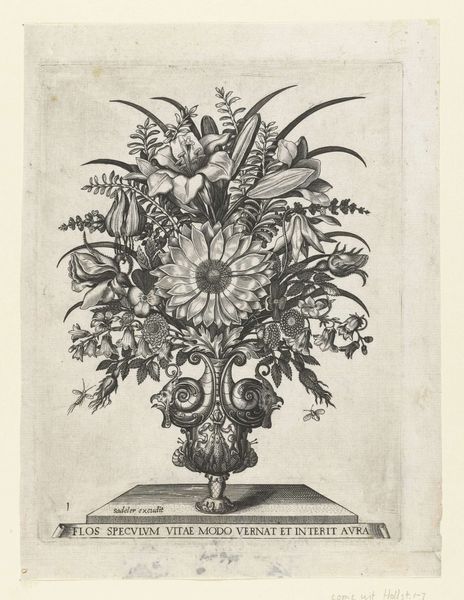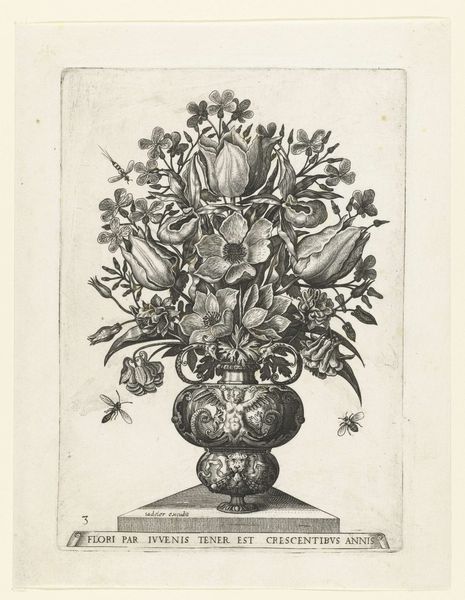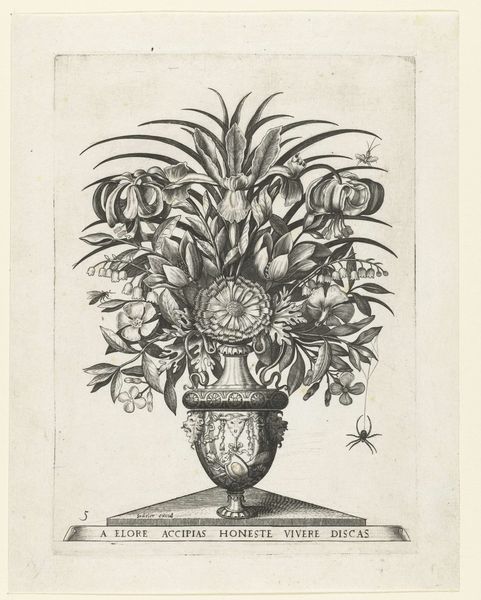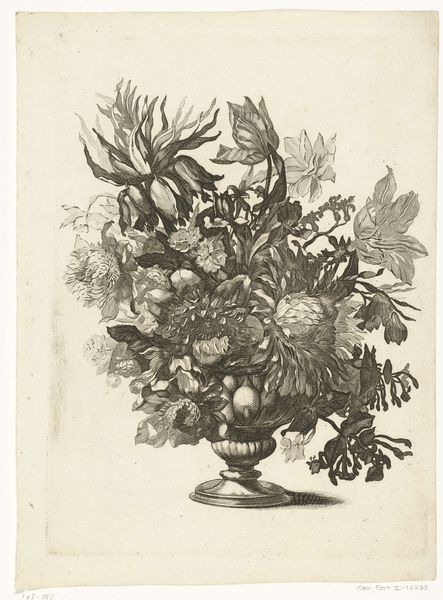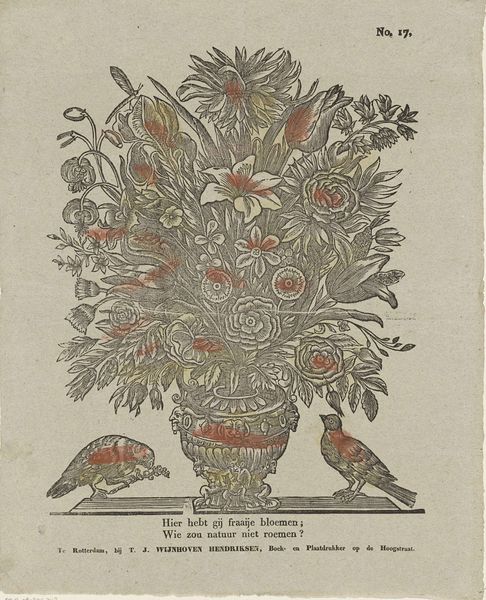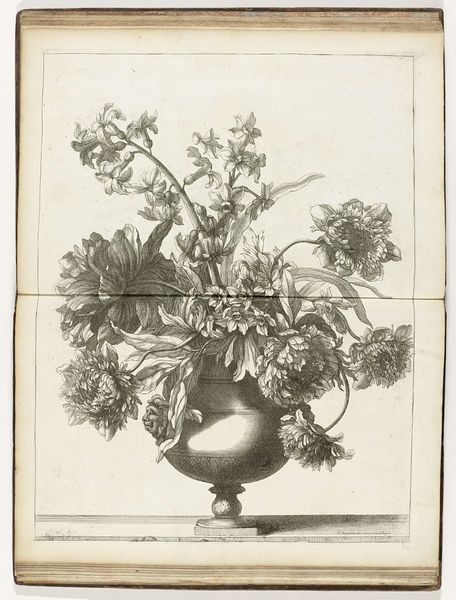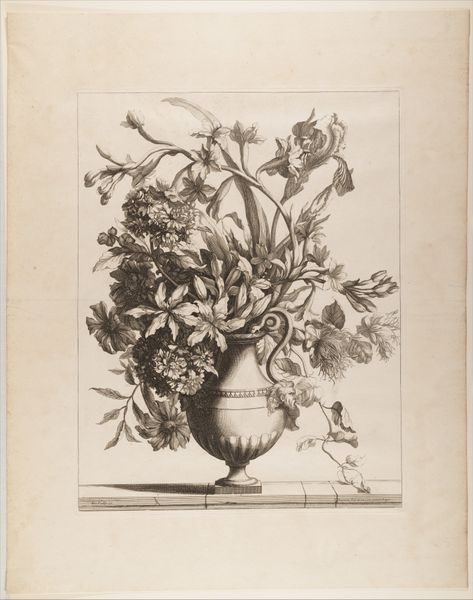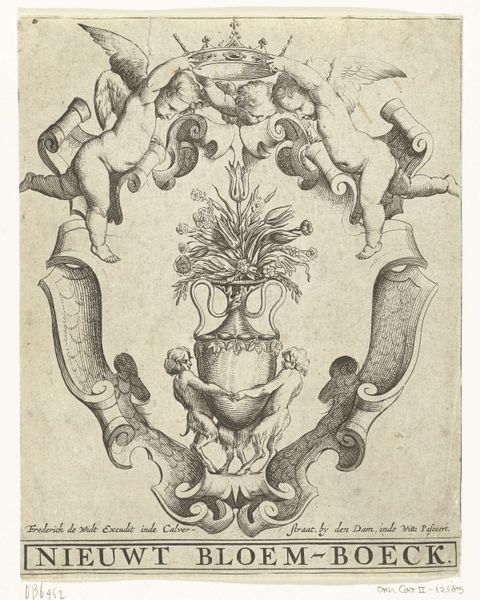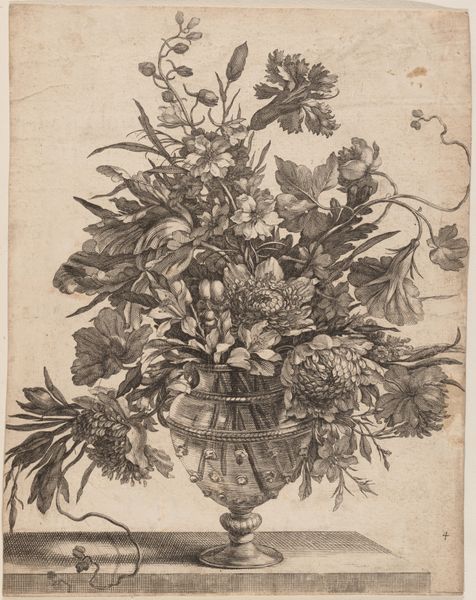
#
light pencil work
#
pen drawing
#
pen sketch
#
pencil sketch
#
old engraving style
#
ink drawing experimentation
#
pen-ink sketch
#
pen work
#
sketchbook drawing
#
pencil art
Dimensions: height 190 mm, width 145 mm
Copyright: Rijks Museum: Open Domain
Editor: Here we have an interesting floral arrangement, “Groteske vaas met twee oren in de vorm van koppen van bokken” which translates to grotesque vase with two ears in the shape of goat heads from circa 1500-1600, by an anonymous artist. It seems to be an engraving. It’s fascinating how such detailed naturalism is captured in monochrome. What are your initial thoughts when you look at it? Curator: I find it interesting to consider this engraving in the context of its time. Floral arrangements like these weren’t merely decorative; they were powerful displays of wealth, knowledge, and connections. Who do you think had access to such extravagances in the 16th century? Editor: Certainly not your average peasant! Perhaps wealthy merchants or aristocratic families who had their own private gardens? Curator: Exactly! Furthermore, botanical illustration was becoming increasingly scientific. The precise rendering of these blooms reveals not only artistic skill but an engagement with the burgeoning fields of botany and natural history. Do you notice any visual devices that help convey these aspirations? Editor: Well, the Latin inscription at the bottom seems to be saying something. Also, the details, the almost hyper-realistic way each flower and even the insects are depicted. They convey a sense of scientific observation and categorization. Curator: Precisely. The inclusion of the Latin inscription suggests an educated audience, deepening the message of cultivation, both literal and intellectual. How does understanding this socio-cultural context impact your perception of the work? Editor: It definitely elevates it beyond just a pretty picture! Knowing about the hidden meanings and who this artwork was created for gives the image a whole other layer of depth, hinting at class, knowledge, and even status. I would’ve missed it otherwise. Curator: And that, in essence, is the power of situating art within its historical framework; seeing it not as an isolated object, but as a mirror reflecting the society that produced it.
Comments
No comments
Be the first to comment and join the conversation on the ultimate creative platform.
